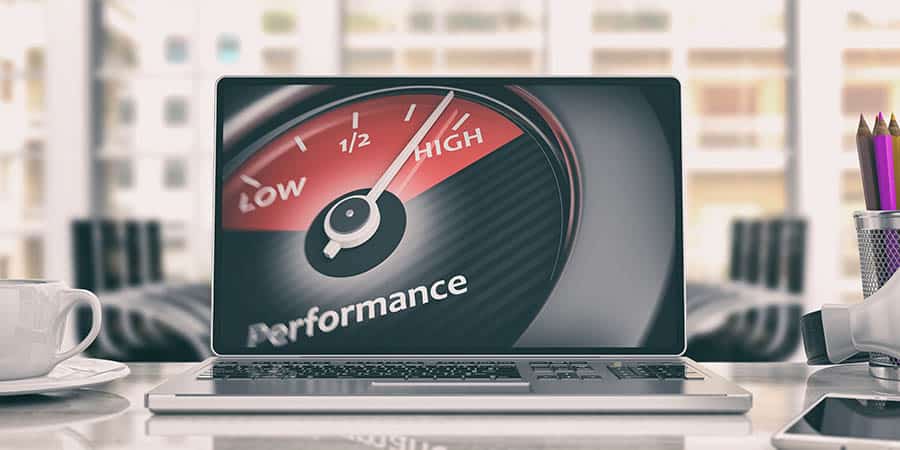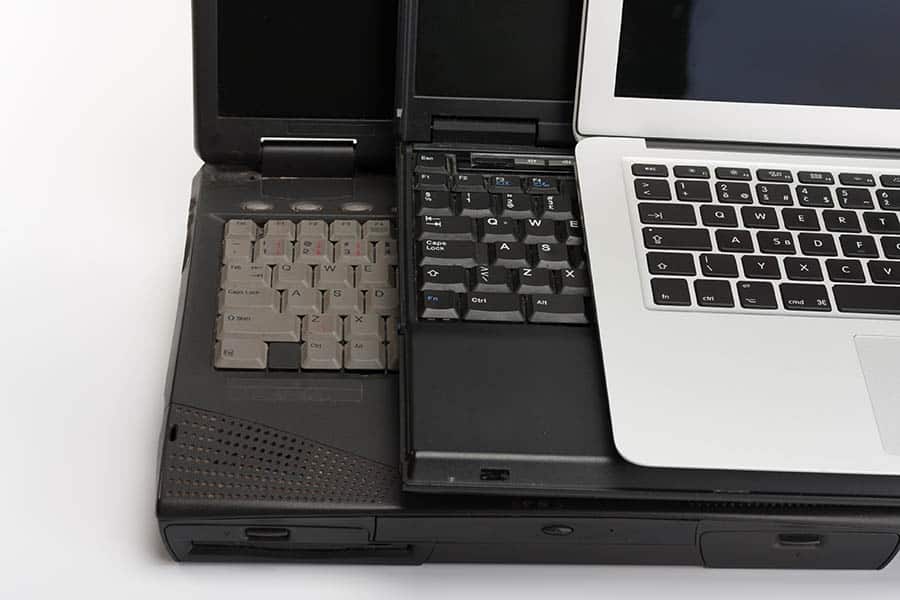Refurbished laptops are often thought as an inferior choice to a brand new one. This is definitely true if you’re going to buy a refurbished option of the exact same model, as with any product, it’s typically better to have an unused device.
But when you’re on a tight budget, you’re going to be limited to only spending a certain amount on a laptop. Say you’re looking for a £400 laptop – would you be better off buying a new model, or would a refurbished option be the better buy overall? That’s what we’re going to look at now.
Pros and cons of refurbished laptops
Generally, you can save some cash by going for a refurbished option. They’ll often allow you to get a bit more for your money, as many people prefer to buy brand new over secondhand. So, you can end up getting a real bargain.
When you buy a refurbished laptop, they’re often heavily discounted in comparison to a brand new one. Many times, refurbished products are of a similar standard to a new model, with very little use. This means that you can quite simply get more for less.
On the downside, there is some risk when buying a refurbished laptop, as you have no idea what it’s been through before it’s made its way into your hands. Plus, their warranty can be as short as 30 days, meaning you’re not covered whatsover.
This is a brief summary though. Let’s run through the major pros and cons of refurbished laptops so you can make your own mind up.
Pros
For those that are a bit handy with tech products and fixing things themselves, there are a few specific benefits that a refurbished laptop can offer. They may not be the best choice for a computer novice, as a new computer or laptop will come with a much longer warranty – but I’ll get to that in a minute.
Better specs

The main benefit of opting for refurbished over a brand new one is that you’re going the be able to get a more powerful laptop overall. This is best understood when we look at laptops within the £300-500 range.
For this kind of money, if you’re buying brand new, then you’re likely going to end up getting a laptop with 4GB of RAM. This is acceptable for the average user, but not great if you run several programs at the same time.
An example is the Lenovo Ideapad 1, which retails at £300 with 4GB RAM. For this kind of price, you can actually opt for a refurbished laptop instead, like a Lenovo Thinkpad that’s 3-4 years old. You can usually pick them up for the same price.
The Thinkpad would come with an increased 8GB of RAM, and therefore be more powerful. It’ll likely also come with a better processor, superior graphics and more storage space for you to use too.
Thoroughly tested
If you are set on buying a refurbished laptop, then you need to do your due diligence. Buying from a retailer or private party can be more risky, so it’s vital that you check their online feedback to ensure that they’ve got a good track record.
Many people opt to go for refurbished goods directly from the manufacturer themselves, and this is usually a good idea. Refurb laptops tend to go through quite a strict testing process to make sure that they’re okay for resale at bigger companies.
This means that if you buy direct, there’s a good chance that there’s going to be little – if anything – wrong with your laptop.
Better for the environment
A lot of time and material goes into making a new laptop. It takes energy, resources and quite a lot of heavy metals to actually make a laptop. And actually, disposing of them can be even more impactful.
This means that maximizing the lifespan of your laptop should be something that we all make an effort to do. Picking up a refurbished device is one way to do this, as you’re not only avoiding creating demand for new laptops, but you’re also saving one from going to the landfill too.
If you do want something more powerful, then opting for a Windows laptop will allow you to get a device that’s upgradeable. Getting a refurbished laptop and adding more RAM can be a good way to get an even better laptop at a lower cost.
Cons
Whilst there are definitely a lot of positives to getting a refurbished laptop, it’s not all good. There’s a couple of reasons why you may want to steer clear of secondhand and stick with a new laptop instead.
Older Gen, limited lifespan

It’s true that with a refurbished laptop you can typically get a more powerful laptop. But, this doesn’t really take into account the fact that the technology that’s used in the laptop will likely be older, and probably from a previous generation a few years ago.
So whilst you may get a better processor on paper, it could be 3-5 years old. In that time, the alternative CPU on a new laptop may actually be better and have more adjustments made.
Plus, this isn’t even taking into account the potential wear and tear on the internal components of a refurbished laptop either. Someone has likely used your new refurb before, which is obviously going to have an effect on how long it will last.
With any brand new laptop, we generally look for a 5 year lifespan before you need to consider upgrading. With a refurb, this time is reduced down to 3 years, or even less if it’s been used extensively.
Limited Warranty
If you purchase a brand new laptop, then the likelihood is that you’re going to get a decent warranty to go with it. If anything goes wrong with it in the first few years and there’s any defects, then you’re going to be covered.
This usually isn’t the case with a refurbished laptop. Though they can come with a warranty, this will typically only be about a year or so, or in some cases 6 months or less. If after this period your laptop starts playing up, then you really don’t have a leg to stand on.
It’s still pre-owned
There’s definitely a nice feeling about ordering a brand new Macbook or Dell XPS and unboxing it yourself. Taking it out of its packaging and setting it up for the first time is definitely an experience, though obviously it comes with a premium price.
A refurb laptop is likely to have some signs of wear and tear over the years that it’s been used. This is usually little dig marks and scratches, as most manufacturers won’t sell their products if they’re too badly damaged. Plus, it may have an inferior battery life to a brand new one, especially if it’s been used for a few years beforehand.
A good compromise could be to look for a refurb that’s still in almost new condition. Sometimes, a new laptop will get sent back for a defect or issue, and the manufacturer will just fix this small problem and put it back out for sale at a discount price.
This can be a happy medium between the two, but it’s not always easy to find deals like this.
Conclusion
There’s an inherent risk when buying a refurbished product – it’s not just limited to laptops. Even with one that’s not that old, there’s always going to be chance that something’s going to go wrong with it.
For most people, a new laptop is likely to be the better choice. Although you may sacrifice some potential quality with the model that you opt for, if you can afford to, a fresh laptop will be the safer option. New ones can come with a 3 or 4 year warranty too, which will give you peace of mind for much longer.